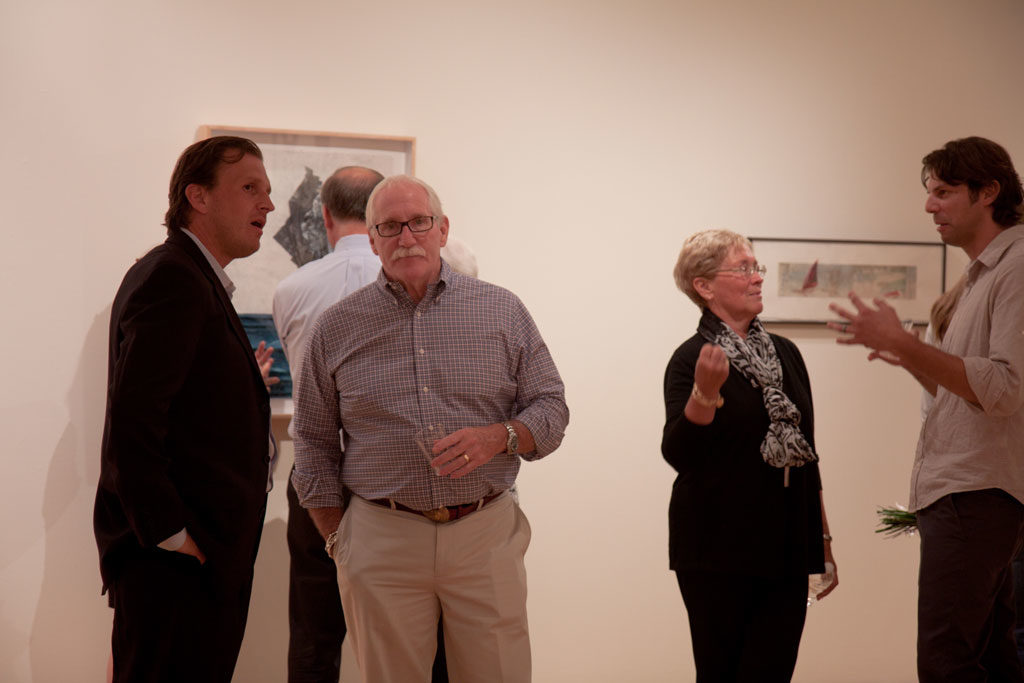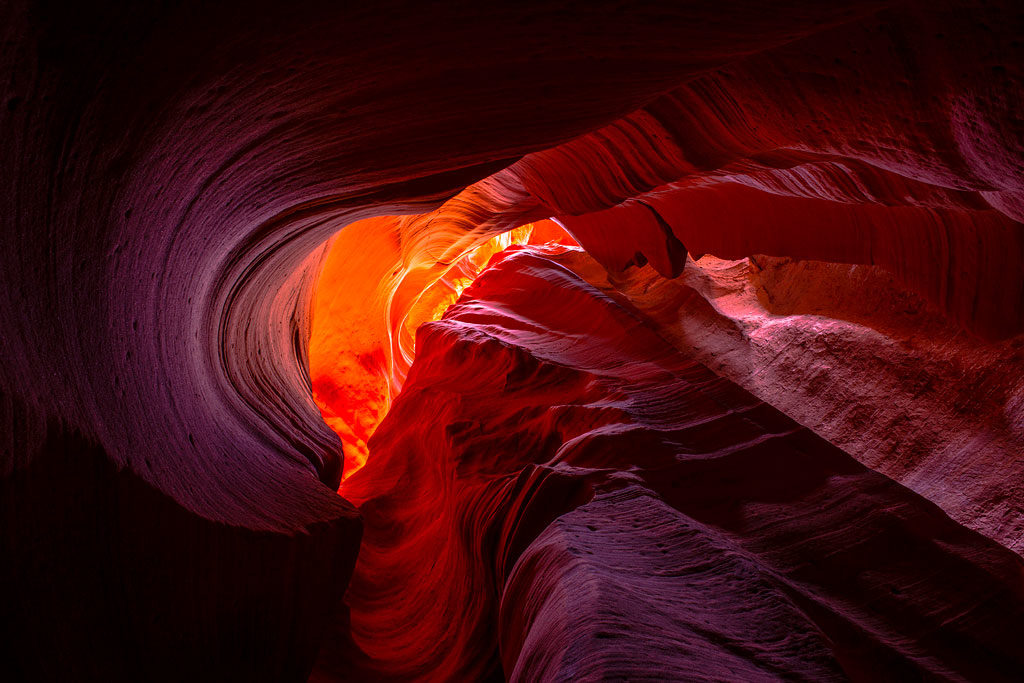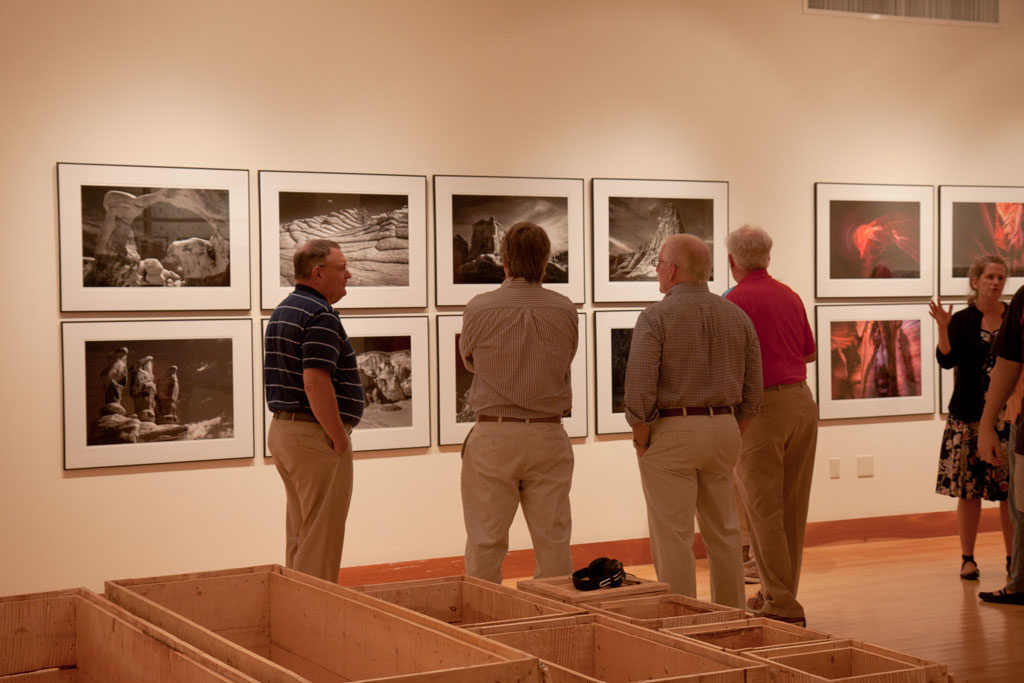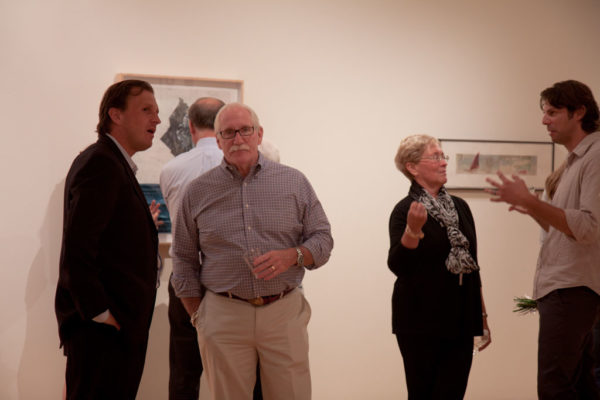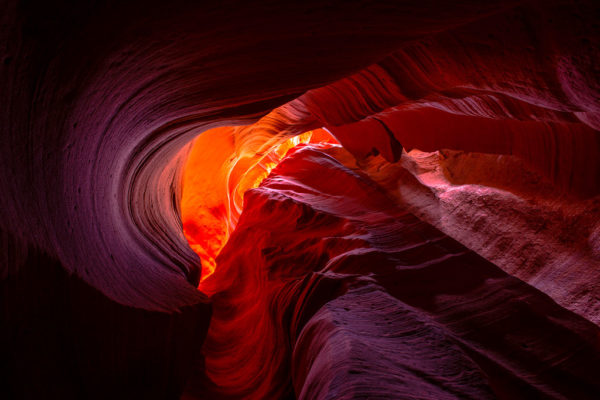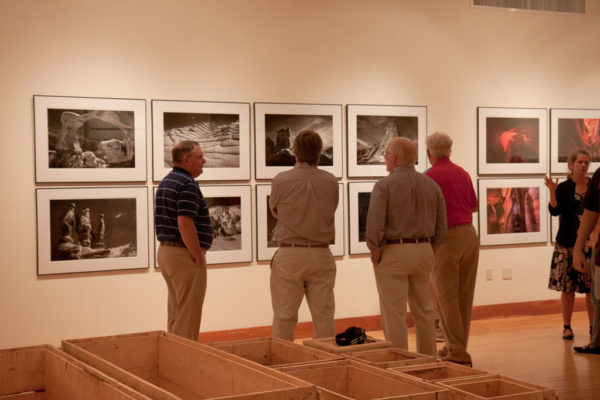Andrew Howard
Andrew Howard is one of five studio art professors whose artwork is featured in the exhibition “P3SF” in the Beard and Weil Galleries through October 31. His photography draws from the landscapes of New England, Ireland and the southwest United States. Here, we ask him about the intersection of his work as an artist and professor.
Q: How does what you do as an artist influence what you do as a professor vice versa?
A: I think that being an artist is very hard work; in my case both mentally and physically. My recent work consists of photographing the landscape of the southwest. Doing this kind of work requires a high level of fitness and stamina because the terrain is difficult and much of it is done at fairly high altitude. Add to that the weight of my equipment, approximately 30 pounds, and you can understand how difficult getting to certain locations can be. Art making can be very hard physically and there are no lazy approaches to it if you want to be successful. There is also the psychological aspect of image making. If one decides to become an artist, be prepared for your mind to be on full alert, 24/7. If you aren’t actually out making art, you’re thinking about it to the point where it can become obsessive. These are the messages I try to get across to my students who are accustomed to completing work on an assignment-to-assignment basis where the assignment is externally imposed. Art making is really not this way. The artist must be responsible for what is made or not made, for being inspired or not. Over the years, through seeing the work of literally thousands of students and participating in an equal number of discussions about visual images, I sometimes become inspired by something I see or hear in the classroom. Students have a way of coming at things with fresh eyes and ideas. Sometimes these ideas stay with me and find there way into some part of my work or how I think about it.
Q: What inspires your work as an artist?
A: I have always been inspired by images of the natural world. I love seeing them as photographs, drawings and paintings and I especially love being in places where I can make my own photographs of the forms and lines of nature. I find that I truly resonate with those places at a level that is not completely visual. The simple way to talk about it is to say that it is spiritual in some way, but that’s not entirely it either. I guess this is where I take the easy way out and say that I hope my images express how I feel in a more nonverbal way. To be more specific, and I know that this may sound a little hokey to some, but I don’t choose the images, the images choose me.
Q: How does your work as an artist influence your mentoring of students?
A: My history as an artist has informed me just how difficult being an artist can be. Not everyone should become a professional artist. Some should enjoy art at a different level or in a different way. Students have a way of sorting themselves out and coming to terms with where they are or should be in he artistic food chain. In the “Arts In Ireland” program, I take the very best studio students to Ireland for a three-week intensive art making experience. Students quickly learn where and how they compare to their peers. Some realize that they need to work harder and others realize that they have a passion for art but “making” art and being a “professional artist” is maybe the wrong track for them. My job is guide and mentor. They must make the ultimate decision as to any career path in the arts. I am a teacher, not a judge. I have had many students ask me directly whether or not they should pursue art as a career and my answer is always that they must decide that for themselves.
Q: What was your major and how did your time in college shape you as an artist.
A: I was a physical education major in college with aspirations to coach college football. So, the direct answer is, it didn’t. Ones career path is not always direct or predictable and we find our way through circuitous routes. I am an example of the expression, “all who wander are not lost.”
Q: How do you balance your life as an artist with the demands of being a professor?
A: Honestly? For an artist, being a professor is the ideal profession. Being a professor provides a steady income with benefits and, because of our academic schedule, time to do my own work. I feel very fortunate to have been in this position for so long. Also, what I teach is what I do. Couldn’t ask for a better situation.
Q: It must be hard to do both so well. How do both enrich your life?
A: I love my job. I love working with students. I am very fortunate that I have great colleagues. I look forward to Monday mornings. It’s up to others to decide whether I have done any of it well.
Gallery photos by Jessica Kuszaj

